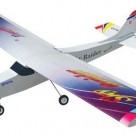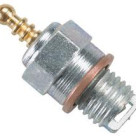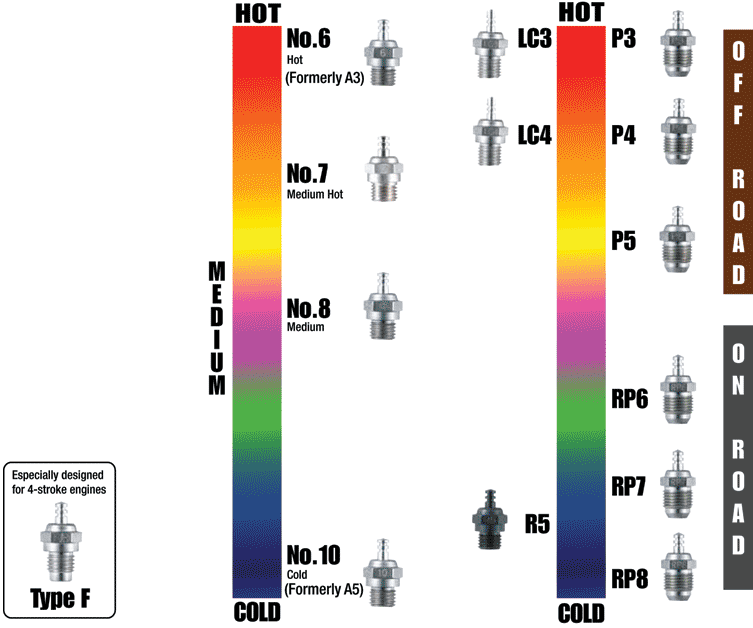نقشه ساخت کالیبره اسکای ریدر – ۴ کانال با موتور سوختی
نوشته شده توسط admin در دسته نقشه, نقشه کالیبره اسکای ریدر | بدون نظر

این نقشه کاملا بهسازی شده و توسط استاد بینیاز طراحی مجدد
کالیبره و دوباره سازی شده و و تعداد زیادی از آن توسط گروه اسکادران عشق و
هنرستان پرواز ساخته شده و به پرواز درآمده است .
برای نیروی پیشران می توانید از موتور سایز ۰٫۴۶ و ۰٫۵۵ استفاده کنید .
در نقشه زاویه دای هدرال پیشنهاد نشده لیکن بین ۳ تا ۵ درجه قابل اقدام بوده
و آن را کاملا ترینر می کند .
برای دریافت نقشه اینجا را کلیک کنید ………………..> sky rider
می توانید اگر به اتو کد دسترسی ندارید
با نرم افزار نقشه خوان که در بخش نرم افزار درج شده آن را ببینید .
ادامه مطلبشمع موتورهای سوختی – جدول شمع – نحوه انتخاب شمع
نوشته شده توسط admin در دسته اطلاعات تخصصی | بدون نظر

شمع موتور های سوختی اعم از آنهاکه پایه سوختشان الکل ، بنزین و یا نیترومتان است
از عوامل مستقیم کارایی و راندمان موتور هاست .
با توجه به میزان برودت و حرارت هوای محیط ، سایز سیلندر ، نوع سوخت و کاربری
( هواپیما ، هلیکوپتر ، قایق و ماشین ) و توربو یا استاندارد بودن موتور می بایست شمع
متناسب انتخاب کرد.
کامل ترین مرجع مربوط به موتورهای OS است لیکن برای سایر برند ها نیز تقریبا صادق می باشد .
نکات مهم توصیه های انجام شده به شرح ذیل بوده و اصل متن نیز برای استفاده بیشتر درج شده
همچنین برای سهولت جدول انتخاب شمع نیز جهت دریافت بارگذاری شده و در انتها توصیه های کلی در خصوص
به کار گیری از انواع مارکهای شمع درج شده است که مطالعه آن نیز در موارد مورد نیاز مفید است
ذکر این نکته مهم است که معمولا برای شمع واژه های گرم و سرد استفاده شده و با
شماره و حروف انگلیسی نشان دار می شوند
خلاصه نکات مهم :
۱- دقت کنید موتور شما از موتورهای عادی و استاندارد است یا برای موتور توربو شمع انتخاب می کنید .
۲- هرچه سایز موتورتان کوچکتر باشد شمع گرمتری باید استفاده کنید .
۳- اگر از سوخت نیترومتان استفاده میکنید با افزایش غلظت نیتروی آن شمع سردتری پیشنهاد می شود.
۴- در روزهای گرم از شمع سردتر و درروزهای سرد از شمع گرمتر استفاده کنید.
۵- شمع های یدک و اضافیتان را در حای خشک و غیر مرطوب نگهداری کنید.
۶- شمع را به درستی در جای خود نصب کنید تا از استهلاک زودرس و یا عدم احتراق مناسب جلوگیری کنید .
۷- ترجیحا از باتری شمع برای استارت زدن موتور استفاده کنید و در غیراین صورت ولتاژ بالای
۱٫۵ ولت به شمع متصل نکنید .
۸ – خجالت نکشید همشیه از مدلرهای قدیمی تر سوال کنید ، آنها تجربیات بسیار با ارزشی دارند.
جدول زیر شرح خلاصه شمع های os را توضیح داده و در ادامه چارت شمع و … نیز درج شده :
|
#۶
|
Hot
|
OSMG2690
|
A long-lasting plug for most .10-.60 2-strokes |
|
P3
|
Ultra Hot
|
OSMG2699
|
For 21VZ-B V-Spec and most .18-.28 off-road racing Turbo head engines |
|
P4
|
Super Hot
|
OSMG2697
|
For 21VZ-B V-Spec and most .18-.28 off-road racing Turbo head engines |
|
P5
|
Very Hot
|
OSMG2711
|
For 21VZ-B V-Spec and most .18-.28 off-road racing Turbo head engines, especially when the temperature is high or for leaner needle settings and high-nitro/high-rpm running |
|
LC3
|
Hot
|
OSMG2700
|
Long reach, for 1/10 scale off-road engines such as O.S. 21TMs and Traxxas® peak needle settings and punchy throttle response |
|
#7
|
Medium Hot
|
OSMG2713
|
For 2-stroke airplane, helicopter and car (except Turbo head) engines. Offers stable idling, broad peak needle settings and punchy throttle response |
|
RP6
|
Medium
|
OSMG2703
|
For most .12-.21 on-road racing Turbo head engines |
|
LC4
|
Medium
|
OSMG2708
|
Long reach, for 1/10 scale off-road engines such as O.S. 21TMs and the Traxxas TRX2.5 & 3.3™ engines |
|
#8
|
Medium
|
OSMG2691
|
A favorite for most 2-stroke engines |
|
RP7
|
Cold
|
OSMG2704
|
For most .12-.21 on-road racing Turbo head engines |
|
RP8
|
Cold
|
OSMG2715
|
Outlast the hottest heats with Turbo head engines |
|
#10
|
Cold
|
OSMG2693
|
Ideal for aircraft engines .60-size and up |
|
R5
|
Cold
|
OSMG2694
|
For leaner needle settings and high-nitro/high-rpm scale racing |
|
F
|
4-Stroke
|
OSMG2692
|
Long reach and long life for 4-stroke engines |
The “right” glow plug for your engine is the one that gives you the best performance. And you can choose the right plug for any situation, just by following the guidelines below.
1. Engine Type
Guideline 1: Know what type of engine you have. Is it a standard – or a turbo?
Standard engines (engines with a 1-piece head) are most common. Standard plugs are easily available, inexpensive and fit almost all standard engines. Standard plugs are installed with a washer, which creates a compression seal with the head.
Many new O.S. engines are turbo engines, which feature a special 2-piece turbo head. The biggest benefit of turbo plugs is superior performance. Unlike standard plugs, turbo plugs (identified by a “P” in the description) feature a tapered “seat” that matches perfectly with the head. That creates a superior compression seal and with it, maximum efficiency and power. Turbo plugs are the choice for racers who want – and need – top performance.
A word of caution: you should never install a turbo plug in a standard engine or vice versa. Doing so risks doing serious (and expensive!) damage.
2. Displacement
Size matters to glow plugs. What size is your engine? A .12? .15? .21? Big engines have more mass and retain heat better. Smaller, lighter engines don’t, and need the help a hotter plug can offer.
Guideline 2: The smaller the engine, the hotter the plug.
3. Fuel Nitromethane Content
What’s the nitro percentage in your fuel? High-nitro fuels produce more power than low-nitro fuels, but also produce more heat.
Guideline 3: The higher the nitro content, the colder the plug.
4. Temperature
Smart modelers tend to keep a variety of glow plugs on hand. The reason? Because the “right” plug for your engine can change with the temperature. To achieve top performance, your choice of plug needs to change, too.
Guideline 4: The hotter the day, the colder the plug.
5, 6 & 7. Other Considerations
Here are a few other things you should know.
Hot plugs promote better idling and acceleration. If your engine runs rough or accelerates sluggishly, a hotter plug will help.
Cold plugs produce more power and may improve performance if your engine runs hot. The downside is rougher idling and more difficulty in tuning.
Where you run also plays a part. If the track/course has a lot of twists and turns, a hot plug is fine. If the track/course has long straights where you’ll reach maximum rpm, a colder plug is best.
Fuel-air mix not only affects how your engine performs; it can also have an impact on how long your plug lasts. If you run rich, it means that you’re using more fuel than necessary for top performance. Modelers are often advised to run rich during engine break-in, because it helps cool the engine. However, running too rich can also cause an engine to “bog down” or quit entirely. In addition, it also means that the glow element is being exposed to more contaminants than necessary, which shortens plug life.
Running lean means that you’re using less fuel. “Leaning down” an engine has a positive effect on performance. However, care is needed here, because over-leaning an engine can harm it, by raising operating temperatures, “burn up” a plug before its time.
Final Thoughts
Choosing the right glow plug not only improves performance, but can also extend the life of your engine and the glow plug itself. With the guidelines above and the tips below, you’re well on your way to achieving both.
- Buy quality plugs. You’re protecting your investment.
- Store plugs where it’s dry. Moisture can ruin them.
- Use the right glow plug. Follow the guidelines above.
- Follow proper break-in procedures.
- Tune your engine carefully. Running too lean will make your engine “blow” plugs more often. Proper tuning helps extend plug life.
- Never touch the filament of a glow plug. Doing so can break the filament and ruin a plug.
- Don’t over-tighten your plug. Tighten it until it’s just snug.
- Be sure to shim your engine correctly. A plug that’s too close to the piston can cause detonation, which will quickly damage a glow plug.
- Use only a glow starter or 1.5V battery to heat your plug. Otherwise, your plug may burn out ahead of its time.
- Don’t be afraid to ask for help. Experienced modelers have already “been there, done that.” Their experience can save you time and money – and most are glad to help
——————————————————————————————————
General Glow Plug Information – ConsolidatedBy James McCarty, Brian Cooper, and Brian Gardner
OS Glow Plug Information# 8 Hot Recommended for most current O.S. (and other) 2-stroke engines ENYA Glow Plug Information# 3 Hot All Enya engines such as TV & four cycle engines Fox Glow Plug InformationAll 1. 5 Volt Plugs are Dry Cell or Ni-Cad All 2 Volt Plugs are Lead Acid Battery Standard Short Hot 1.5 Volt, Standard Short Hot 2 Volt McCoy Glow Plugs with OS EquivalentMC-8 Medium Hot #8 (thanks for correction, mvbashers.org) STD ROSSI GLOW PLUGS BI-TURBO GLOW PLUGS (without idle bar) (conical w/o washer)Rossi Glow Plugs (cold for pattern type work / high nitro fuels, hot for sport / low nitro flying) R1 Extra hot 0.8 to 2cc RB4 Hot R/C GLOW PLUGSG2 Medium (with idle bar) Glow Plug Usage TipsYour glow plug temperature range is too cold when:
Your glow plug temperature range is too hot when:
These are several cures to these problems. We suggest using a fuel with less nitro methane content, using a larger size propeller or using a colder plug than the one currently in use. For example if an Enya # 3 plug gives you these problems in your engines, switch to a # 4 plug. Model glow plug engines are extremely dependent upon the type and quality of the glow plug used. Enya glow plugs use a platinum alloy coil, which uses a thick diameter wire for long life. The thicker wire coil also eliminates the need for an “idle bar” as found on other brands of glow plugs; idle bars tend to reduce top speed slightly, to achieve a more stable idle speed. Enya’s glow plug design insures both good top end speed and stable idle speed. Enya glow plugs also have a thicker battery contact at the tip of the plug for greater heat dissipation and better electrical contact. Altech Marketing presently stocks glow plug battery cords specifically for Enya glow plugs, which are standard equipment with Enya four-cycle engines. Other glow plug cords usable with Enya glow plugs are available from several other manufacturers. HOT GLOW PLUGS (for low nitro and FAI fuels)Enya: # 3 MEDIUM GLOW PLUGS (for 10%-15% nitro fuels)Enya: # 4 (medium hot), and # 5 (medium cold) COLD GLOW PLUGS (for high nitro; 25% +)Enya: #6 (cold) FOUR-STROKE GLOW PLUGS (hot)Fox: Miracle plug (often used in 2C’s W/low nitro) IDLE BARSIdle bar glow plugs came about because some engines were having trouble transitioning from idle to high speed. When the throttle was opened from idle, the incoming air and raw fuel would strike the glow plug’s heated coil, cooling it to the point where it would no longer support the combustion process, so the engine would die. To help prevent this, the idle bar was added to the glow plug to serve as a physical shield, helping to keep the coil from cooling off too quickly. A glow plug with an idle bar will not increase peak RPM (it may even reduce it in some cases), but it may improve the idle with some engines, since it simply helps to keep the plug hot enough to light the fuel. If your having transition problems, you might want to try using a glow plug with an idle bar. Some modelers use idle bar plugs in the winter only, since the glow plug tends to loose heat faster in the colder environment. Naturally, all of this assumes that you have the low speed mixture adjusted correctly to begin with. HOT PLUGSSo what is a ‘hot’ plug, and how does it differ from a ‘cold’ plug? Naturally, a hot plug will heat up faster and stay hotter, but that’s not the whole story. When discussing this aspect of glow plugs, another very important aspect must be considered, the amount methanol in the fuel. The more methanol we’re using (i.e., less oil and less nitro), the hotter the plug we should use. Conversely, the more nitro and/or oil we use, the less methanol we’re using, so we use a cool(er) plug. An extreme example would be when using a very high nitro content fuel in a very high RPM engine (a typical ducted fan engine, for example). Here we’d use a very cold plug. For most sport pilots using fuel with just 5-15% nitro, however, a hotter plug would probably do well. Probably? Yes, trial and error is often the best (and sometimes ‘only’) way to determine the right glow plug for your application. Most 4C engines need either high nitro or hot plugs to run at their best, since they have combustion strokes only half as often as 2C engines. RULES OF THUMB TO LIVE BY
|
- ———-
- .





آخرین دیدگاها